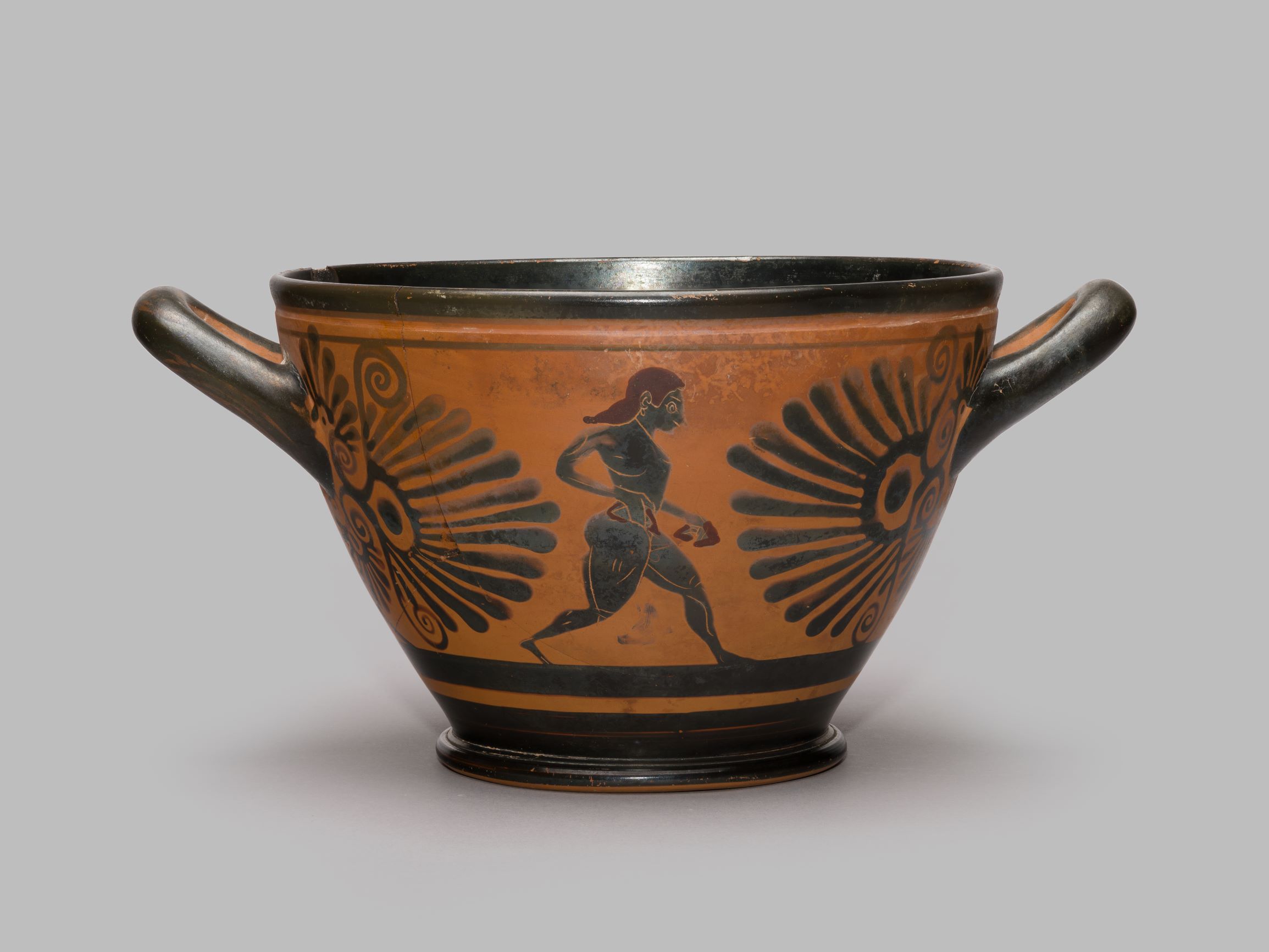
Skyphos [Gr13]
Athenian Black-Figure, Near the Painter of Louvre C 10336, 530-520 BC
Painted terracotta (h. 12.6 cm, w. 25.4 cm)
Athletes exercising with halteres (jumping weights), palmettes around the handles and an inverted lotus bud underneath each handle.
This skyphos (cup) would have been used for drinking wine at the symposium, an all-male drinking party which involved many aspects of Greek life such as poetry, myth, dance and intoxication. Athletes often feature in the decoration of vases used at the symposium. On this cup are depicted two nude youths in dynamic poses, their age represented by their beardlessness. Facial hair was used to make the important distinction between boys, young men, and adults. Until the age of Alexander the Great (356 – 323 BC), who started a fashion for shaving, possession of a beard was a sign of maturity.
The youths are recognisable as athletes because of their nudity (the word gymnos means naked, and its verbal form gymnazein is ‘to perform in the nude’), and because they hold halteres (jumping weights). These were used in the halma (long jump), one of the events of the ancient Pentathlon. Made either of stone or metal, the halteres weighed around two kilograms each and were swung backwards and then released while the jumper was in mid-air. Modern scientific studies have shown that weights of this kind can indeed increase the distance of a jump, if used correctly.
Two different types of halter have been excavated by archaeologists: the ‘long’ halter was a simple weight made of lead, and the ‘spherical’ halter was made of stone and carved to fit the hand. Both types can be seen on Greek vases – this cup shows the spherical form. It is clear from vases depicting groups of athletes in the gymnasium that halteres were not used only for the long jump, but also for general weight training. Here, the halteres are picked out in added red pigment, as is the long hair of the youths. Musculature is indicated by the incision of fine lines into the black paint.
Literature: J. Falconer and T. Mannack, Corpus Vasorum Antiquorum: Great Britain, Fascicule 19: Winchester College (Oxford, 2002), p. 5, plate 4.1-3; J.D. Beazley, Paralipomena: Additions to Attic Black-Figure Vase-Painters and to Attic Red-Figure Vase-Painters (Oxford, 1971), p. 84.18; J.M. Hammond, Greek Vaes in the Museum, Supplement to The Wykehamist, No. 1099 (6 March, 1962), p. 2, fig. 2; J.D. Beazley, Attic Black-Figure Vase-Painters (Oxford, 1956), p. 201; Winchester College Memorial Buildings: Department of Classical Art (Winchester, 1909), p. 16 (no. 36)
Exhibited: Chichester District Museum, May-September 2004; Winchester Discovery Centre, July-August 2012
Provenance: From Athens, at Winchester College by 1909
Location: Treasury, Gallery 3